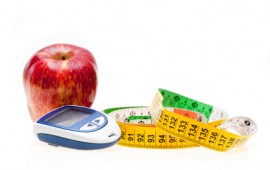Managing Type 2 Diabetes
Author: Shannon Miller Lifestyle

Can you reverse or reduce symptoms of Diabetes Type II?
Modern research and personal stories point to: possibly.
Please note: this is not a cure-for-all, but a step in the right direction that may reduce or reverse symptoms of Diabetes Type II.
In one research study, those diagnosed with Diabetes Type II were prescribed a controlled diet of 1200-1800 calories per day, and prescribed a specific exercise program of 175 minutes per week. Within a year, 10% of those studied were off of their Diabetes medicine completely, controlling their disease through diet and exercise.
Here are the keys to that success:
- The Diabetes was caught early.
- The participants were very dedicated to their lifestyle lessons.
Diet and exercise are not a guarantee, but for 20% of people who start a lifestyle change after diagnosis keep their symptoms manageable. This may mean a reduction in medications for many, and a halt to the furthering of the disease or problems stemming from it, such as kidney failure or blindness.
How To Begin
If you are diagnosed with diabetes or pre-diabetes, chances are that your doctor will give you some steps to take in your diet and exercise. A simple diet plan to follow would be the DASH diet, which is prescribed for people with heart disease, but is also helpful in diabetes and pre-diabetes. This is because the DASH diet is full of natural ingredients, and cuts out excessive sugars and saturated fats. Another way to get help with your diet is to see a registered dietician. An RD is different from a nutritionist because they are specifically trained to help people with ailments and diseases.
The first way to work on an exercise plan is to start. Your doctor will ask you to start moving more, a few minutes at a time. Simple cardiovascular exercise, such as walking, biking, or swimming, is a good way to start. Just 10 minutes a day can make a difference, and as your body adjusts, you can begin to increase the time.
The Mayo Clinic recommends testing blood sugar before, during, and after exercise, as this greatly impacts how much you can do on any given day. The sweet spot for exercise, the Mayo Clinic says, is 100-250 mg/dL. Lower requires a snack, while higher could be a complication with ketones.
When unsure of how to proceed with exercise, contact a fitness professional that is specifically trained to help people with diabetes. You can find a list of qualified fitness professionals at IdeaFit.
For more research on Diabetes Type 2, find information at the American Diabetes Association.
